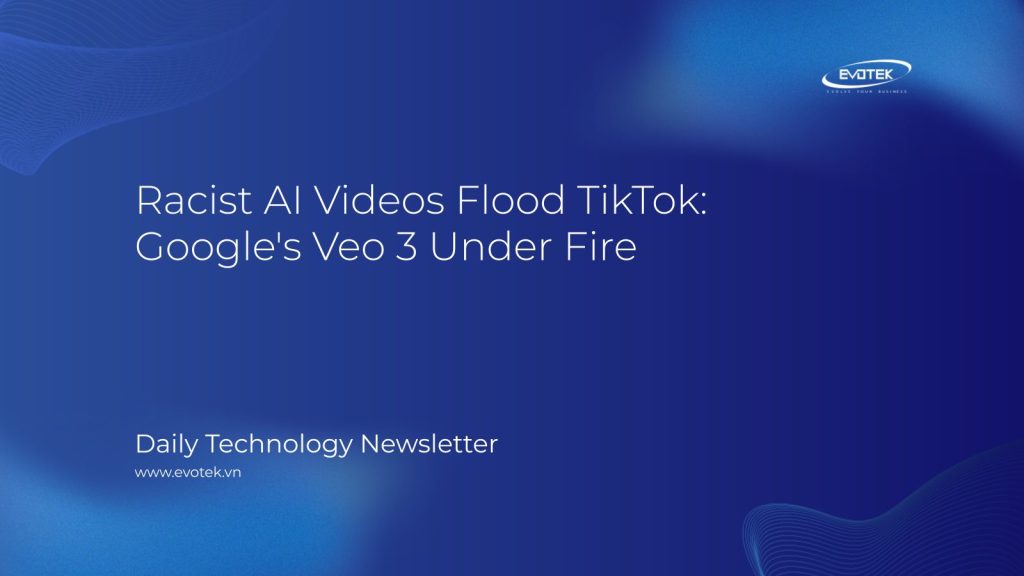Google’s advanced AI video generator, Veo 3, is facing scrutiny as it’s being exploited to create and spread racist content on TikTok. Despite both platforms having policies against hate speech, a surge of AI-generated videos containing racist and antisemitic tropes has been observed.
Veo 3’s Pixel-Perfect Output Used for Harmful Content
Since its release in May, Veo 3 has impressed with its video quality. However, this power is now being misused. A report by MediaMatters highlights numerous TikTok accounts posting hateful content, particularly targeting Black people, Jewish people, and immigrants. These videos, identified by the “Veo” watermark, often perpetuate harmful stereotypes.
The hateful videos often depict Black individuals in stereotypical and derogatory ways, while also targeting other minority groups with antisemitic imagery. The brevity of the videos, often around eight seconds, doesn’t diminish their impact, with many users echoing the hateful sentiments in the comments.
Broken Guardrails?
Google emphasizes the safety measures implemented in its AI models. However, Veo 3 appears to be circumventing these guardrails. The AI’s inability to grasp the nuances of racist tropes allows users to create offensive content by using indirect prompts.
TikTok’s Moderation Struggles
TikTok’s community guidelines explicitly prohibit hate speech. Yet, these videos are spreading widely, exposing the challenges of content moderation on a platform with massive uploads. While TikTok claims to use both technology and human moderators, the volume of content makes timely intervention difficult. A TikTok spokesperson stated that some accounts were banned before a MediaMatters report, with the rest now removed.
Google’s Prohibited Use Policy Violated
Google also has a strict policy against hate speech and harassment. The emergence of these videos suggests a failure in enforcing these policies. The ambiguity of prompts and AI’s limitations in recognizing nuanced racist tropes contribute to the problem.
The Spread Beyond TikTok
The problem isn’t unique to TikTok. Other platforms with less stringent moderation, such as X (formerly Twitter), are also seeing a rise in AI-generated hate content. Google’s plan to integrate Veo 3 into YouTube Shorts raises concerns that this issue could escalate on YouTube as well.
While Google and TikTok have policies in place, their enforcement is insufficient. The incident highlights the ongoing challenge of preventing the misuse of powerful AI tools for malicious purposes. The realism of Veo 3 makes it particularly appealing to those seeking to spread hateful stereotypes, raising questions about the effectiveness of existing safeguards.
We have reached out to Google for comment regarding Veo 3’s safety features and will update this article as needed.
Source: Ars Technica

 日本語
日本語 한국어
한국어 Tiếng Việt
Tiếng Việt 简体中文
简体中文